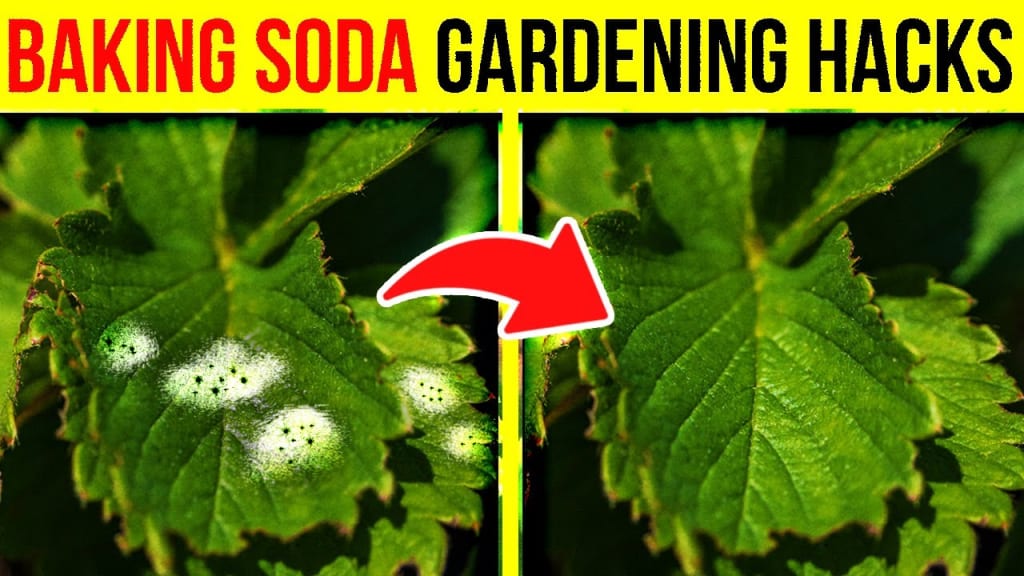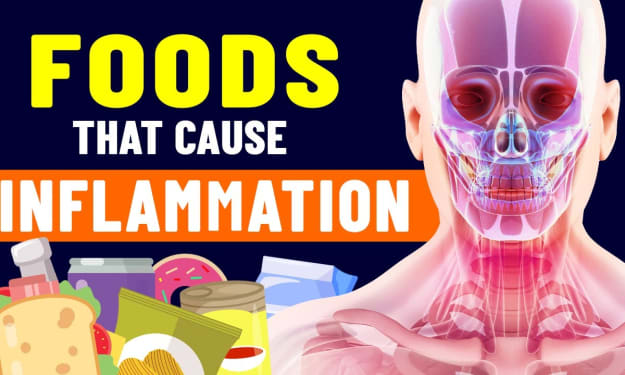8 Amazing Ways to Use BAKING SODA in the Garden 🌱
Do you love gardening? Growing plants from seeds and tending to them in my garden is more than just a hobby; it’s pure bliss. I’m not sure about you, but watching something I planted grow into a beautiful, thriving plant instantly uplifts my mood. Gardening is a great way to connect with nature and a sneaky way to burn some calories. And the best part? You don’t have to break the bank to reap the rewards of gardening. With some simple baking soda tricks, you can have a thriving green space in no time!

Do you love gardening? Growing plants from seeds and tending to them in my garden is more than just a hobby; it’s pure bliss. I’m not sure about you, but watching something I planted grow into a beautiful, thriving plant instantly uplifts my mood. Gardening is a great way to connect with nature and a sneaky way to burn some calories. And the best part? You don’t have to break the bank to reap the rewards of gardening. With some simple baking soda tricks, you can have a thriving green space in no time!
In today’s video, we will unveil the mystery of how baking soda can work wonders in your garden. So tune in and discover how this simple ingredient can elevate your gardening game.
Number 1 : It’s time to put away those insecticides; have you ever stepped into your garden only to find insects have nibbled away your most beautiful flower while you were away? It can be frustrating. Insects are a major problem in most gardens; they can destroy your plants and cause damage. This is why most people use insecticides to try and get rid of these destructive insects. But did you know insecticides threaten your health and the environment thanks to the chemicals they contain? These chemicals can be problematic as they contaminate your garden's fruits and vegetables. A safer way to protect your garden from pesky insects is right in your kitchen pantry! Baking soda is an effective solution for getting rid of those unwanted bugs surrounding your plants; plus, it’s simple to use. The next time you spot an insect creeping around your plant, just lightly sprinkle some baking soda around your plant on top of these pests and watch them disappear! This method is excellent if your tomato plant is under a hornworm infestation; however, if you have cabbages, kale, and other cruciferous vegetables in your garden that are under infestation, you’ll need to add equal parts baking soda and regular flour and dust this mixture on to remove any insects. But why wait for an insect infestation to strike when you can prevent it from happening in the first place? Wondering how? Grab your gardening gloves, and let’s find out!
Number 2 : Baking soda as an infestation prevention: Now, spotting insects and grabbing some baking soda is helpful; you can also use it as a preventative infestation method. After all, prevention is better than cure. Although you want to keep pesky insects away, there are helpful bugs, such as bees and ladybugs, that are important for your plant's well-being. And the biggest problem with insect repellants is that they might interfere with these pollinators. So this is where our cost-effective solution, baking soda, comes into play! You just have to be careful with how you use it. To use baking soda as an insect repellant, you will need full-strength baking soda. Use a flour sifter to sprinkle the baking soda around plants evenly and along your garden's paths. Using baking soda as an insect repellant is also effective in getting rid of ants and roaches. Not to mention, it effectively prevents slugs and snails from causing damage to your garden. Don’t apply baking soda on top of your plant, as this can affect helpful pollinators. By using baking soda around your plant on its soil, bees, and ladybugs won’t be targeted, and your garden will be A-OK.
Number 3:A great garden cleaner: The upkeep of your garden requires the use of various tools. As a result, it’s crucial to clean them regularly, and one of the most effective ways to do so is by using baking soda. When mixed with water, baking soda becomes slightly alkaline, making it an effective cleaning agent for your gardening tools. By adding baking soda to your cleaning routine, you can easily remove dirt and grease buildup from your tools. What about your garden compost pile? If you know anything about compost piles, they can be pretty smelly. But by simply sprinkling some baking soda on top of your compost, you can help with the smell. You likely also keep your garbage bins outside near your garden, which no doubt gets smellier with use throughout the week. Try applying a thick layer of baking soda at the bottom of your bin to remove the odor too! If there is furniture in your garden, such as chairs and tables, take a crack at using baking soda to clean them. Mix one spoonful of dishwashing soap with one half cup of baking soda. Put that in a gallon of warm water and get scrubbing! All that work in the dirt throughout the day can leave your hands not smelling the best. And yes, you probably know what I’m about to say, but baking soda can help remove that odor! Wash your hands with soapy water and put some baking soda on them before rinsing. Now, the next baking soda hack will surely surprise you.
Number 4 : Baking soda to test soil: Are you ready to impress your friends and take your gardening to the next level? One of the most important things you could do is to start testing your soil's pH level in your garden regularly. Why? Well, knowing your soil’s pH level can actually help you figure out which plants would thrive the best in your garden! And guess what? You don’t need to buy an expensive kit to do this. You can easily determine your soil’s pH level with something as simple as baking soda. To do this, put some of your garden soil in a container with some baking soda and water. If you see bubbles start to form, then your soil’s pH level is below 7, meaning it’s acidic. If there are no bubbles, the pH level is above 7, and your soil is alkaline. Plants that grow best with a pH level below 7 are acid-loving. These include blueberries, azaleas, camellias, and hydrangeas. These plants thrive in acidic soil because it allows them to absorb the nutrients they need to grow properly. If your soil’s pH levels are above 7, try growing plants such as asparagus, broccoli, cabbage, garlic, lettuce, onions, spinach, and tomatoes. Sometimes fruit trees like apples and pears will also grow well in slightly alkaline soil.
Number 5 : Reducing the acidity level of soil: What if you’re not looking to grow acid-loving plants? We just talked about testing soil using baking soda, but get this, it can also help make your soil more alkaline. Maybe you plan to cultivate lavender, lilac, or more veggies, which require alkaline soil to thrive. However, after testing your soil’s pH levels, you discover that your garden’s soil is too acidic. Don’t worry! Simply sprinkle baking soda on the soil’s surface and gently work it in. You can also use water to help the baking soda penetrate deeper into the ground. Begin with a moderate amount of baking soda; then, after about a week, test if your soil’s pH levels have changed. If the pH hasn’t increased enough, add more baking soda and repeat the process. This method is especially useful if you’re planning on growing tomatoes. You can grow sweeter tomatoes if you reduce the soil's acidity levels around the tomato plants. But make sure you don’t put the baking soda on the plant itself, as a full-strength concentration can burn the stem and leaves. Speaking of tomatoes, is it a fruit or veggie? While you figure this out, why not watch a video on the health benefits of eating them? Watch it here.
Number 6 : Removing mildew: Mildew can grow on your plants if your garden remains damp for a long time. Mildew is a fungus that can develop and thrive in warm and humid conditions. It looks like a white or gray powdery substance and can damage the plant it grows on. If your plant grows mildew, you’ll notice it on its leaves. There is also the likelihood of leaf spot disease. To remove any mildew growth, you can use baking soda before it begins affecting your entire garden. Add one spoonful of baking soda to about a liter of water, mix, then use a cloth to apply the solution on the leaves affected by mildew. Also, apply the solution thoroughly in places that can be hard to reach. Once done, rinse the areas where the solution is applied and use a dry cloth to ensure all the spots are dry again.
Number 7 : Getting rid of weeds: Weeds are a nuisance in almost every garden. They use up resources in the soil and not allow your plants to grow healthy. Controlling the weeds in your garden is vital if you don’t want your plants to compete for nutrients and sunlight. One effective way of dealing with weeds is baking soda. The baking soda you use on your plants is safe if the concentration is small. But when you use a higher concentration of baking soda, they can be very effective against weeds. A good approach to tackle crabgrass or larger weeds in your garden is to spray them generously with water first. Then, sprinkle a heavy layer of baking soda on the targeted weeds. Try doing this on a sunny day, as baking soda will be more effective at burning and drying the weeds. In cases where smaller weeds are growing in pathways, sprinkle the baking soda in all the places liberally. The baking soda will act on the weeds, kill them, and prevent future growth.
Number 8: Baking soda can increase photosynthesis: Photosynthesis is the process through which plants convert sunlight into food. Leaves are the method through which plants conduct the photosynthesis process. To do this effectively, your plant’s leaves need to be clean. Add one spoonful of baking soda to a liter of water. Take a cloth or sponge and apply the concentration on the leaves. Do this gently, as you don’t want to damage the leaves themselves. Once you clean them thoroughly, the leaves will be able to absorb more sunlight.
Gardening can be a fun activity when you know a few clever hacks. Whether you are a beginner or a seasoned gardener, there’s no harm in learning more about health-boosting plants. Let’s keep the conversation going with a couple more videos on plants you can keep in your house or bedroom. Watch "8 Plants You Should Keep In Your Bedroom" here.






Comments
There are no comments for this story
Be the first to respond and start the conversation.